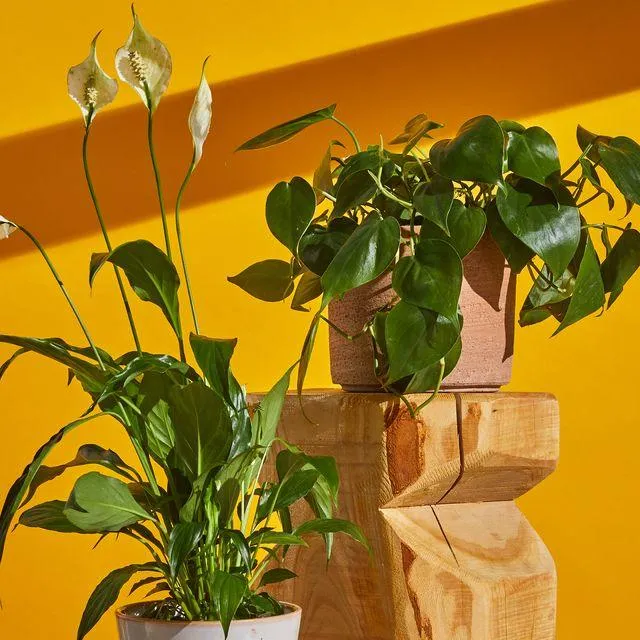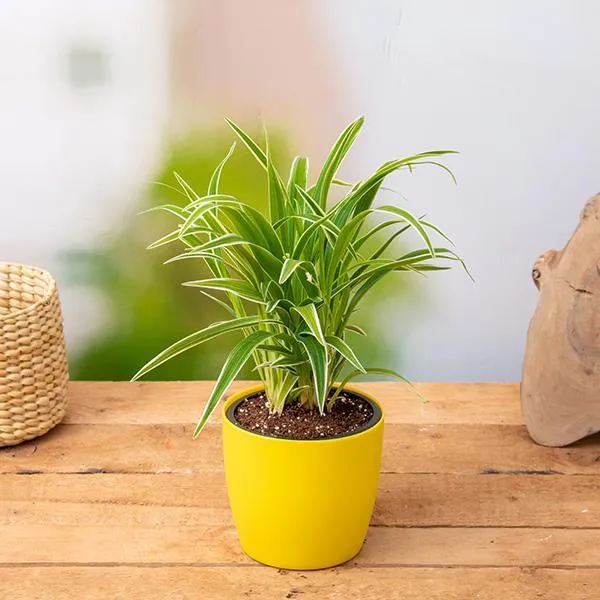The Best Trees to Grow Indoors and How to Care for Them
Whether you live in a small apartment with limited outdoor space or simply want to bring the outdoors in, growing trees indoors can be a rewarding way to brighten up your home. However, not every tree is suited for the indoor environment. In this article, I’ll explore some of the top options for indoor trees along with tips for providing them with proper care.
Choosing the Right Tree for Indoor Conditions
When selecting a tree for indoor growing, there are a few key factors to consider:
- Light requirements – Most indoor trees need medium to bright indirect light. South or east-facing windows usually provide sufficient illumination.
- Humidity tolerance – Many houseplants struggle with low indoor humidity. Look for trees adapted to dry conditions.
- Mature size – Dwarf or miniature varieties are best to avoid overcrowding your space. Most reach only a few feet tall.
- Low maintenance – Indoor trees demand less upkeep than outdoor varieties. Choose ones that don’t require regular pruning or pest control.
With these priorities in mind, here are some top contenders for growing indoors:
Chinese Evergreen (Aglaonema)
From my experience, Chinese evergreen is one of the most foolproof indoor trees. Its leathery, deep green leaves thrive in low to medium light. Chinese evergreen tolerates dry air and neglect better than most. It stays uniformly bushy at 1-3 feet tall, making it suitable for tables and desks. Just water when the soil becomes dry.
Dwarf Umbrella Tree (Schefflera)
The umbrella tree mimics the shape of its namesake with pairs of rounded leaflets radiating from branches. Miniature cultivars reach only 3-4 feet indoors. Umbrella trees accept low light well and hold moisture in their thick leaves, reducing the need for frequent watering. Their vines and branching habit give an airy, full appearance perfect for brightening small rooms.
Dwarf Date Palm (Phoenix roebelenii)
For a tropical touch, consider the slow-growing date palm. Its slender gray-green fronds arch gracefully from a single trunk. Mature indoor specimens max out around 4 feet. Date palms handle dry indoor air fairly well as long as their soil stays moist. They make outstanding desk or floor plants lending an exotic flair. Just be aware their large root balls can make repotting a challenge.
Rubber Tree (Ficus elastica)
With its deep green, glossy leaves and thick trunk, rubber tree lends a dramatic look. It thrives in medium to bright indirect light and endures dry conditions better than most trees. Although large patio varieties reach 30 feet outdoors, indoor cultivars top out around 5 feet. Rubber trees prosper on a schedule of infrequent watering. Simply allow soil to dry slightly between irrigations.
Cornstalk Dracaena (Dracaena fragrans ‘Massangeana’)
Dracaena earns its keep as a nearly bulletproof indoor tree. Its upright canes of narrow green leaves withstand low light, dry air, and neglect. Dracaena stays compact at 3-5 feet, making it suitable for bedrooms and living areas where taller trees may be out of place. Consider dracaena when you need a reliable tree that demands little care beyond occasional watering.
Caring for Indoor Trees
While the tree species above accept subpar care, following some basic practices helps keep them thriving:
Light

Place trees in bright, indirect light from an east or west-facing window. Supplement with grow lights if windows provide insufficient illumination.
Water
Water when top 1-2 inches of soil dry out. Feel weight of pots before watering to judge moisture content. Let excess drain to avoid root rot from overwatering.
Humidity
Group plants together or use pebble trays to raise localized humidity. Consider a cool mist humidifier for very dry homes.
Fertilizer
Feed weakly diluted liquid fertilizer monthly April-September when trees are actively growing.
Pruning
Prune off anything damaged or diseased. Shape plants as desired, but avoid heavy pruning which may shock some indoor varieties.
Pots

Repot only when roots overgrow their containers. Use well-draining potting mix specifically for houseplants.
Pests
Inspect regularly for signs of problems like spider mites or mealybugs. Isolate and treat affected plants promptly to prevent spreading.
Tips for Displaying Indoor Trees
Thoughtful placement and pairing with the right planter enhances an indoor tree’s aesthetic value. Here are some tips from my experience:
Group mini trees together on coffee and side tables for a tropical jungle feel. Place solitary specimens in cleanlined geometric planters to highlight their sculptural forms. Consider non-traditional containers like repurposed vintage buckets that complement a tree’s character. Use tall, narrow trees to draw the eye upwards and give a sense of height in lowerceilinged rooms. Combine foliage with blooming companions like orchids or succulents for year-round visual interest. And don’t be afraid to get creative – I’ve seen indoor trees styled in espresso mugs, glass terrariums and more!
Common Problems and Solutions
Most indoor trees remain problem-free with normal care. Yet occasional issues do crop up that deserve addressing:
Spider mites: Recognize fine webbing and yellow stippling. Spray with insecticidal soap or neem oil. Isolate infected plants.
Mealybugs: Identify fluffy white masses. Wipe off with cotton balls dipped in alcohol. Apply systemic insecticide as needed.
Brown leaf tips: May indicate overwatering. Cut back and improve drainage. Water only when surface dries out.
Leaf drop: Potential causes include low humidity, sudden temperature changes or underwatering. Boost humidity and water regularly.

Lack of growth: May mean tree needs fertilizer or a larger pot. Repot in fresh soil and feed as directed earlier.
In closing, growing trees indoors can be rewarding with the right variety suited for your care level and space. Matching plants to conditions helps avoid frustrations down the road. Seeing these little trees thrive under my care has given me lots of joy over the years. I hope you will find your own indoor trees equally gratifying! Let me know if any other tree questions arise.
Best Indoor Tree Options
| Tree | Size | Growth Rate | Care Needs | Good For |
|---|---|---|---|---|
| Chinese Evergreens | Small to Medium | Slow | Low | Low Light Areas |
| Snake Plants | Medium | Very Slow | Very Low | Low Light, Toxins |
| Banana Plants | Medium to Large | Medium | Medium | Bright Spots |
| Areca Palms | Medium | Medium | Medium | Low/Bright Light |
| Bonsai Trees | Small | Slow | High | Aesthetic Appeal |
FAQ
-
What is the best indoor tree for low light?
One of the best indoor trees that does well in low light is the ZZ plant. It can survive with very little sunlight and doesn’t need a ton of water. It’s pretty tough to kill! The snake plant is another good option.
-
Do indoor trees need direct sunlight?
While most indoor trees will grow better with some direct sun, many can tolerate low light. Trees like snake plants, pothos, and spider plants will survive in medium to low light conditions. Still, they may not reach their full size or flower without at least a few hours of direct sun each day. So if possible, give your tree a spot with a south or west facing window to thrive.
-
How often should you water an indoor tree?
The watering needs for indoor trees varies depending on the type and growing conditions. As a basic guideline, trees growing in bright light will likely need water every 7-10 days, while those in lower light can go up to 14 days between waterings. The best way to tell is by checking the soil. If the top inch is dry, it’s time to water. Overwatering is actually worse for trees than underwatering, so go slowly if you’re not sure!
-
What is the easiest indoor tree to care for?
Based on how foolproof they are, the bamboo palm and snake plant would get my vote for the lowest maintenance indoor trees. They basically need water when the soil dries out and can handle lots of neglect. The money tree is also pretty resilient. I had one for years that I occasionally watered and it kept on growing, so those may be your best bets for easy trees.
-
Can indoor trees clean the air?
Some studies show that certain indoor trees can help purify air quality to some degree by absorbing toxins like formaldehyde. Top air-cleaning trees include the peace lily, bamboo palm, English ivy, and spider plant. They’re able to take in harmful chemicals through their leaves and release oxygen. However, trees won’t be as effective as an actual air purifier. At the same time, just having green plants adds color and life to a home, which research says improves well-being.
-
What is the longest living indoor tree?
If longevity is your goal, look no further than the rubber tree. These beauties have been known to survive for over 40 years with proper care. Other long living picks that can basically “live forever” include the snake plant, pothos, dwarf date palm and Chinese evergreen. Of course, their maximum lifespan varies depending on growing conditions. With avg care, you could enjoy these trees indoors for decades to come though.
-
Should indoor trees be repotted?
Most indoor trees will need repotting every few years as their root systems fill out the container. A good sign it’s time is if the plant seems crowded or the soil is coming out of the drainage holes. When switching to a new pot, go up only 1-2 inches in diameter. Too large a container can keep the soil overly moist. It’s best to repot in early spring after the tree comes out of dormancy. Use a well-draining potting mix and your tree should be happy!
-
What size pot is best for an indoor tree?
There’s no single best pot size – it basically depends on the tree type and how big you want it to grow. As a general guideline for trees under 5 feet: small trees 6-10 inches, medium 1-2 feet, and large 2-5 gallons. Consider the mature dimensions so roots have room.you may need to repot into a larger container down the line. It’s better to under-pot than over-pot, which can lead to root rot from soggy soil staying wet too long.

